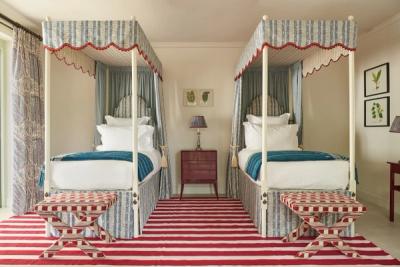Decoration
10 Tips for Lighting Parties, Gatherings, and Dinners

10 Tips for Lighting Parties, Gatherings, and Dinners
Playing host for the day or evening means confronting a near endless list of things to perfect, things to worry about and, potentially, things to over-think late into the night before.
Lighting may not be as high on the list as the crudites and bubbly, but we’d recommend giving it one of the top spots beneath them. Why? Because it’s going to have a massive impact on your guests’ moods from the moment you throw open the door to them.
Remember lighting is as important as music
Ambiance. It’s a tricky thing to master, given how it comprises many intangible elements. Music is the most obvious one, and how many of us haven’t run to throw on a record as we spot headlights turning into the driveway? Lighting is another big one, but it’s easily overlooked because, really, what is good lighting?
We know we don’t want our homes to dazzle guests with harsh, white fluorescents – but beyond that is where many of us get a little lost. Remembering its importance for ambience is, however, the first step.
Avoid the glare
In that case, we’ll start with the easy part. When we’re at home – and especially when we’re bustling around, trying to get the place clean, the main cooked, and the table set – it’s easy to get into ‘work mode’ and turn to the bright overheads for clarity. And, if we’re doing that for a few hours before the guests arrive, it’s easy to get used to those overheads and forget how bright the place really is.
So, while the first step is remembering how important lighting is for ambience, the second is reminding yourself to stop and make that initial transition from one mode to another.
Relying on candlelight rarely pays off
We all love the idea of a gorgeously candlelit dining room – a back patio lit only by lanterns on the trellis and the moon – or a cosy gathering by the fireside and a mantelpiece covered in tealights. It’s picture perfect, and incredibly welcoming…in our minds.
The truth is that, in order to light any space with nothing but candles, you need an awful lot of candles. And, with a handful (or two) of people bustling around, actually pulling it off safely and effectively is a real chore and, more aptly, a bit of a stab in the dark.
By all means, use candlelight, but have your lamps there too to compensate for the fact that a single flame really isn’t as powerful as we think it’s going to be.
Don’t transition out of the blue
If you’re planning on transitioning the lighting from bright to dim at some point during the party, then we’d recommend you do it incrementally. It doesn’t have to take all night but just walking to the wall socket and turning off all the overheads at once will be sudden and jarring. Start in the room your guests will be moving to, so it doesn’t feel like a sudden change of pace.
Lamps are key
So, how do you make that transition gradually? For us, it’s all about the decorative lighting. Your lamps have several advantages over the main lights of the room, but one of the most significant is the fact that lamps can be layered, and that lighting can be adjusted in all different ways throughout the course of a single evening.
You can read our full guide to layering your lighting here.
Keep a ‘bright room’
If you’re hosting more of a casual party, rather than a structured, sit-down dinner party, it can pay off to have at least one room that is lit a little brighter than the others. Most of us have been to plenty of parties where a couple of groups tend to gravitate toward the kitchen, where it’s brighter, and stand and talk in there. For a lot of people, these rooms are grounding, and the added benefit is that you can take advantage of the glow emanating from the doorway to add a little extra light to the dimmer rooms.
The digestif is a good time to raise the lighting, not reduce it
Raise your hand if you start to feel a yawn coming on after a good meal.
Post-dinner, dinner parties can often slip into that quiet, contemplative lull as everyone moves into the living room and enjoys the rest that follows a good meal.
But just how restful do you want it to be? With a comfortable chair and the lights brought down instead of up, the temptation to let those eyelids droop is all too real. They say sleepy guests are a good sign that you’ve done your job as a host, but nobody wants to go over the edge and actually fall asleep in front of everyone.
For that reason, just making the living room a bulb or two brighter than the dining room, and maybe losing the candlelight, could help the evening go on a little longer.
Keep it above ‘night mode’ levels as much as possible
If your guests are known to take pictures, then it’s best to avoid going dark enough that their phones will revert into ‘night mode’. This mode is not conducive to good photographs and will leave all the memories of the night looking fuzzy, dim, and as though they happened twenty years in the past.
Bring out the fairy lights
Decorative lighting from your lamps is key, but there’s no reason not to add in a few accents with the fairy lights. Stringing them up may not contribute to the level of lighting in the room, but it will have a significant impact on ambience
Don’t blind everyone at the end of the night
We all know what happens at the end of the night. The conversation tails off naturally, there is a slight pause, and then one of the guests will say, ‘Well…’, and that’s that. It’s time to make a move.
With the atmosphere changing as guests root around for their coats and keys and shoes, the temptation is to raise the lighting and return to more pragmatic surroundings. There’s nothing wrong with that, but the contrast between those bright main lights and the dark night outside will be much less pleasant. To keep the mood going until the front door has been closed and locked, keep your lighting as it was.
More from Decoration
















